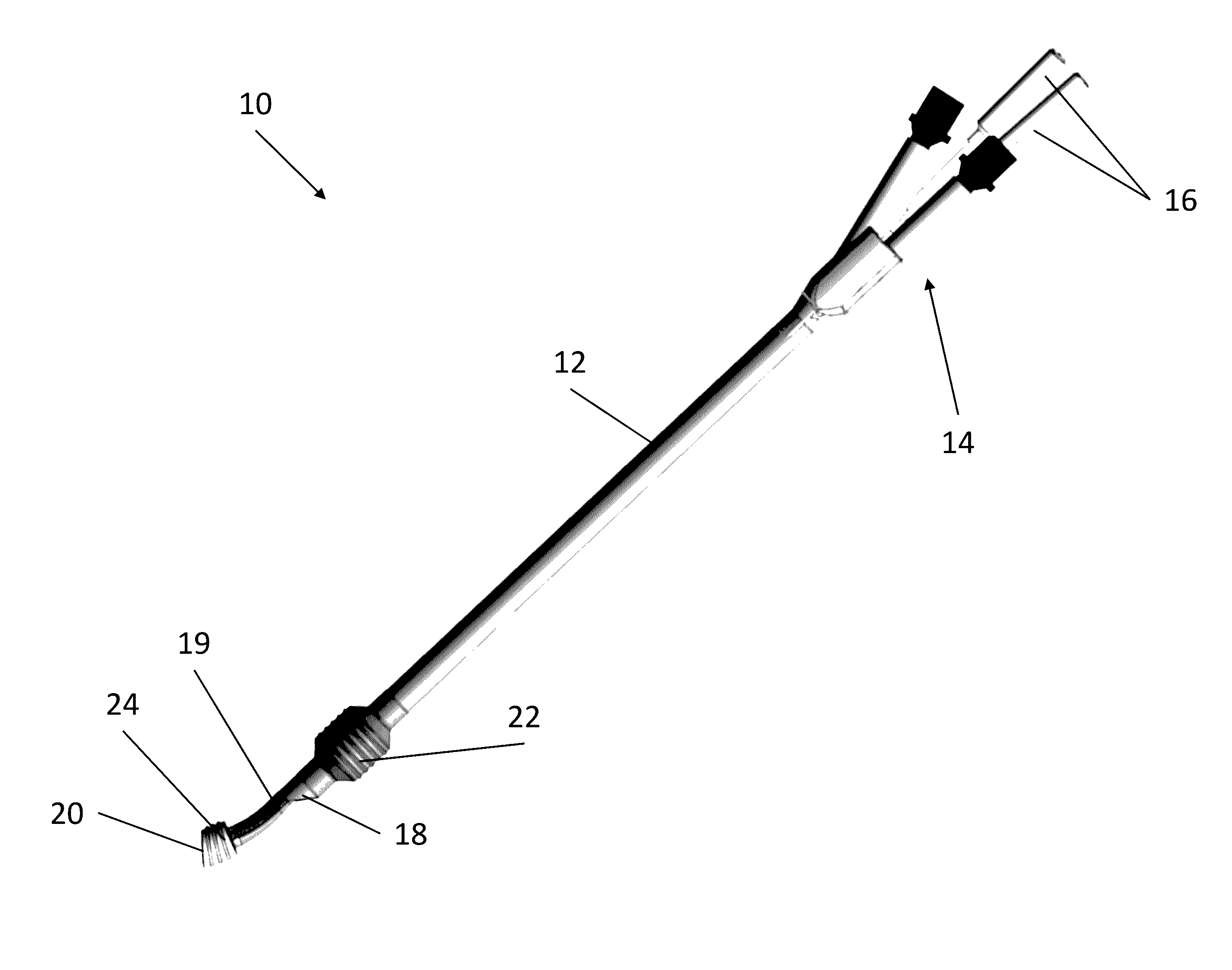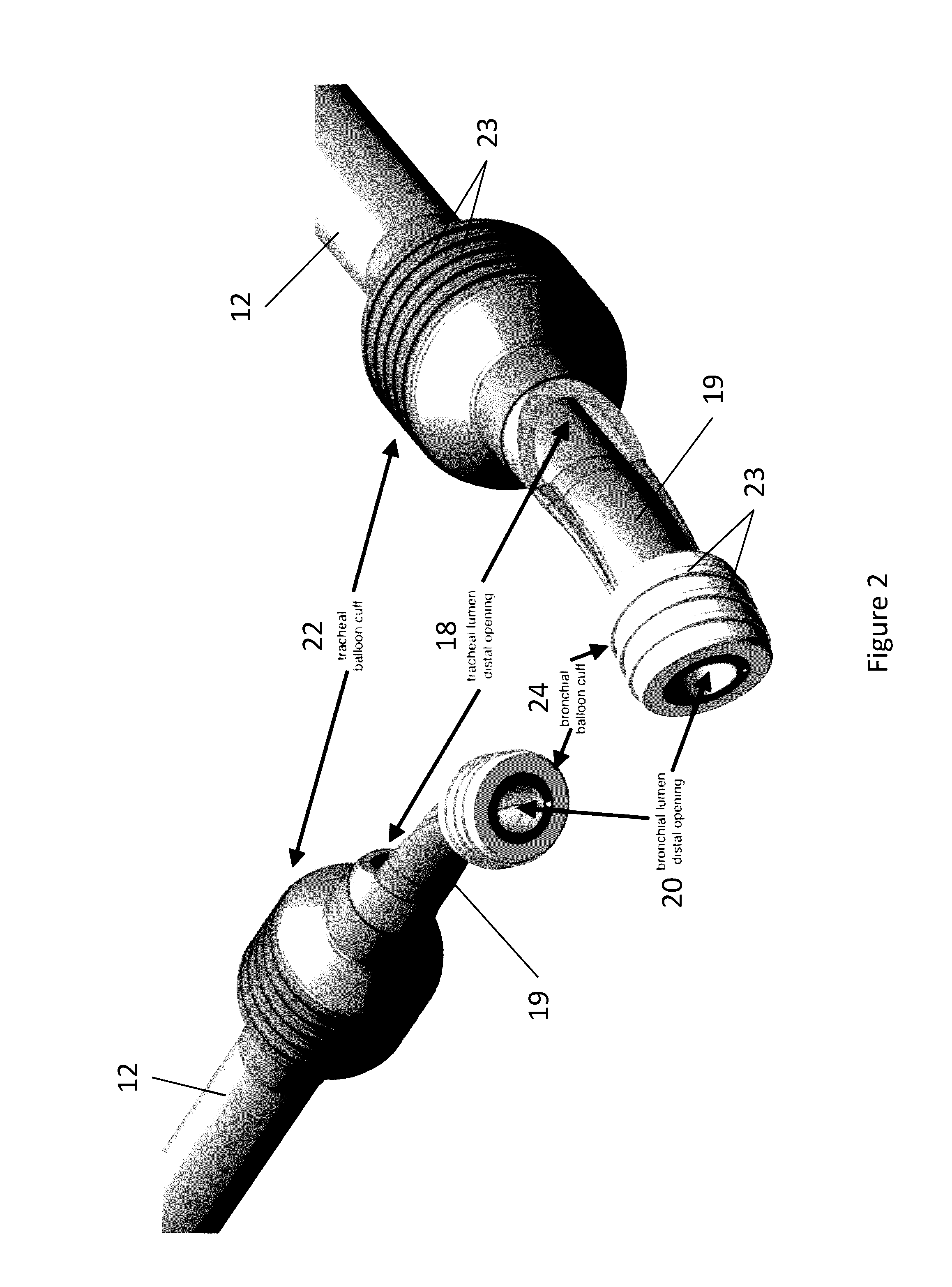Dual Lumen Endobronchial Tube Device
a technology of endobronchial tube and lumen, which is applied in the direction of medical devices, respiratory devices, other medical devices, etc., can solve the problems of difficult insertion and even airway injury, design suffers from several major drawbacks, and affects clinical care negatively
- Summary
- Abstract
- Description
- Claims
- Application Information
AI Technical Summary
Benefits of technology
Problems solved by technology
Method used
Image
Examples
experimental examples
[0070]The invention is further described in detail by reference to the following experimental examples. These examples are provided for purposes of illustration only, and are not intended to be limiting unless otherwise specified. Thus, the invention should in no way be construed as being limited to the following examples, but rather, should be construed to encompass any and all variations which become evident as a result of the teaching provided herein.
[0071]Without further description, it is believed that one of ordinary skill in the art may, using the preceding description and the following illustrative examples, utilize the present invention and practice the claimed methods. The following working examples therefore, specifically point out the preferred embodiments of the present invention, and are not to be construed as limiting in any way the remainder of the disclosure.
example 1
Distal Balloon Cuff Development
[0072]A double lumen endotracheal tube (DLT) contains a distal component that sits in the mainstem bronchus. A balloon cuff is inflated to create an air seal necessary for positive pressure ventilation. There are two configurations: a left sided configuration and a right sided configuration. They are named based on the mainstem bronchus that the distal component resides. Because the anatomy of the left and right-sided mainstem bronchus differs, the design of the distal component, including the balloon cuff, also differs. The right mainstem bronchus is short as compared to the left mainstem bronchus, and if the left DLT distal component design were to be used in the right mainstem, it would likely occlude the opening to the right upper lobe. For this reason, a different design, encompassing an off center balloon cuff with a side peering orifice, is used for the R sided DLT. See FIG. 11 for details about right vs. left bronchus, and FIG. 12 for tradition...
example 2
Membrane Durability Test
[0082]The present study examines the durability of a 0.5 mm semilunar membrane in response to puncture from endotracheal tube stylets or other sharp, hard objects inserted into the lumen of an endotracheal tube.
[0083]The semilunar orifice is tested given that it has the smallest inner diameter (ID) and needs to deform to accept a stylet, maximizing the friction and thus the chance that the membrane will perforate. The full-length extruded shaft with lubricious coating applied to the internal diameter of both lumens was tested, although the device was dry to maximize friction and to take the coating out of the equation. A 15 mm universal connector was attached to the proximal end of the semilunar lumen, completely obliterating both lumens on that side. On the distal end, a round tube was inserted such that the other lumen (round) is still patent and in continuity with the atmosphere, and the connection between the tube and semilunar lumen was silicone sealed t...
PUM
 Login to View More
Login to View More Abstract
Description
Claims
Application Information
 Login to View More
Login to View More - R&D
- Intellectual Property
- Life Sciences
- Materials
- Tech Scout
- Unparalleled Data Quality
- Higher Quality Content
- 60% Fewer Hallucinations
Browse by: Latest US Patents, China's latest patents, Technical Efficacy Thesaurus, Application Domain, Technology Topic, Popular Technical Reports.
© 2025 PatSnap. All rights reserved.Legal|Privacy policy|Modern Slavery Act Transparency Statement|Sitemap|About US| Contact US: help@patsnap.com



